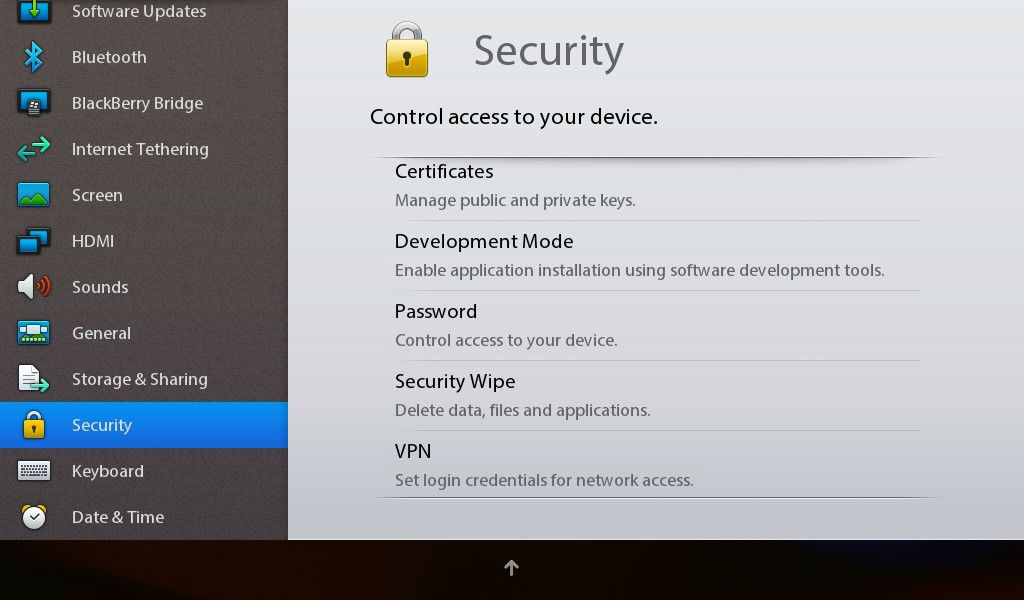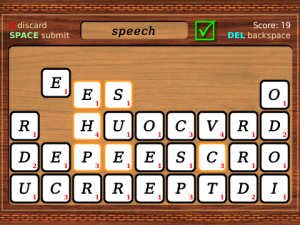

Standard offerings such as Twitter clients were scarce when I checked, though. (Early PlayBook buyers who own AT&T BlackBerrys also encountered a snag this week AT&T may boast that it's the nation's preeminent BlackBerry carrier, but it failed to approve RIM's BlackBerry Bridge app and make it available to customers in time for the PlayBook launch.)Īs for third-party apps, RIM says that the PlayBook's App World already has 3,000 programs not too shabby for a brand-new platform. If you don't have one or have one whose battery has conked out the only way to do e-mail on the PlayBook is to use a Webmail service such as Gmail in the browser. But this "BlackBerry Bridge" leaves the PlayBook utterly dependent on a BlackBerry phone. The idea, RIM says, is to keep the data on the phone so that it's safe from prying eyes even if your PlayBook is lost or stolen.
#WORDS APP FOR BLACKBERRY BLUETOOTH#
Instead, the tablet can piggyback on a BlackBerry phone's Internet connection over Bluetooth and display big-screen versions of the handset's e-mail, calendar, to-do list, and notes. In a decision that's tough to fathom, however, RIM decided to ship this supposedly "professional-grade" tablet without e-mail and calendar apps of its own.
#WORDS APP FOR BLACKBERRY ANDROID#
Some solid software comes preloaded on the PlayBook, including a Web browser that's on a par with the ones on the iPad and Android tablets, plus a word processor, a spreadsheet, and a tool for viewing (but not creating or editing) presentations. Everything's fast and fluid, even if you've got a bunch of programs open. Swipe upward, for instance, and you get access to other apps swipe downward, and you get features such as the ability to open new tabs in the browser. The user interface pays the sincerest form of flattery to HP's WebOS, as seen on the Pre phone and the upcoming TouchPad tablet, but it's easy to pick up and fun to use. Rather than merely rejigger the aging software it uses on BlackBerry smartphones, RIM started from scratch with an operating system designed with the PlayBook in mind. (Read about the debut of the BlackBerry PlayBook.) You can't get a PlayBook with a built-in 3G or 4G wireless connection yet RIM says those options will come along later. The gnat-sized power button is nearly flush with the case, making powering up and shutting down something of a project.)įor a starting price of $499 the same as the iPad 2 the PlayBook provides some serious hardware muscle, including a zippy dual-core processor, 1GB of RAM, 16GB of solid-state storage, high-definition cameras on its front and back, Wi-Fi, and an HDMI connector for output to big-screen TVs. (Bizarrely, one thing you can't do very easily is to turn the PlayBook on and off.

There's no such thing as one true ideal size for a tablet, but seven inches has its advantages: you can cradle the PlayBook in both hands and use your thumbs to swiftly tap your way around the interface, in a sort of modern counterpart to the thumb-typing that made the original BlackBerry famous. Like Samsung's first Galaxy Tab, it sports a sharp 7-inch touchscreen, giving it a paperback-like personality compared to the larger, more magazine-like iPad 2.


Some of the attractions that got me enthused about the PlayBook when I attended the launch still hold, starting with its compact size. (Watch how the BlackBerry tablet is different.) For every feature that works well right now, there seems to be one that's glitchy, half-baked, or simply missing. I've been spending time with a unit loaned to me by RIM, and judging from my still isn't in any shape to be seen in public. Seven months later, the PlayBook hit the shelves this week, one of the highest-profile contenders yet in the market pioneered by Apple's iPad. RIM played a splashy video about the device, detailed its features, and issued a press release laden with words like "unmatched," "uncompromised," and "unique." The one thing it didn't do was show off a working PlayBook presumably because the tablet wasn't yet in any shape to be seen in public. Follow a San Francisco event last September, Research in Motion the company whose BlackBerry phones rank among the most iconic gizmos of all time announced its first tablet, the BlackBerry PlayBook.


 0 kommentar(er)
0 kommentar(er)
